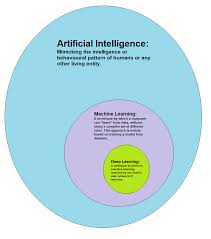Artificial intelligence (AI) has rapidly transformed industries by enabling machines to perform tasks that typically require human intelligence. One of the most discussed aspects of AI is machine learning. But is machine learning part of AI? To answer this question, it is essential to understand the relationship between the two and how machine learning fits into the broader AI landscape.
Understanding Artificial Intelligence
AI refers to the simulation of human intelligence in machines. It encompasses various techniques and technologies that enable computers to perform reasoning, problem-solving, decision-making, and pattern recognition. AI systems are designed to learn from data, adapt to new inputs, and perform specific tasks with minimal human intervention.
AI is classified into two main categories:
- Narrow AI (Weak AI) – AI designed for specific tasks, such as speech recognition or image classification. Examples include virtual assistants like Siri and Alexa.
- General AI (Strong AI) – AI that can perform any intellectual task a human can do. This remains a theoretical concept and has not yet been fully realized.
What Is Machine Learning?
Machine learning (ML) is a subset of AI that focuses on developing algorithms that allow computers to learn patterns from data and make decisions without being explicitly programmed. Instead of following predefined rules, ML models improve their performance over time by analyzing and interpreting vast amounts of data.
There are three primary types of machine learning:
- Supervised Learning – Models learn from labeled data, where input-output relationships are clearly defined. Examples include spam email detection and medical diagnosis predictions.
- Unsupervised Learning – Models analyze data without labeled outputs, identifying hidden patterns or clusters. Examples include customer segmentation and anomaly detection.
- Reinforcement Learning – Models learn through trial and error, optimizing actions to achieve a goal. Examples include robotics and game-playing AI.
Is Machine Learning Part of AI?
The short answer is yes, machine learning is part of AI. ML is one of the most widely used approaches to achieving AI. It provides machines with the ability to learn from data and improve performance without human intervention.
AI includes multiple techniques beyond ML, such as expert systems, rule-based programming, and symbolic reasoning. However, ML has gained significant attention due to its success in real-world applications like facial recognition, recommendation systems, and self-driving cars.
How Machine Learning Enhances AI Applications
Machine learning plays a crucial role in various AI-driven applications, including:
- Natural Language Processing (NLP) – ML enables AI systems to understand and process human language, improving chatbots and translation services.
- Computer Vision – AI-powered image and video recognition rely on ML models to detect objects, faces, and movements.
- Healthcare – AI applications in healthcare use ML algorithms to diagnose diseases, predict patient outcomes, and personalize treatments.
- Autonomous Vehicles – Self-driving cars leverage ML to analyze road conditions, detect obstacles, and make real-time decisions.
- Financial Services – Fraud detection and credit risk assessment use ML techniques to identify suspicious activities and assess customer profiles.
Key Differences Between AI and Machine Learning
While ML is a subset of AI, it is important to highlight key differences between the two:
- Scope – AI encompasses a broad range of techniques, including ML, deep learning, and expert systems, whereas ML specifically focuses on learning from data.
- Functionality – AI can operate with predefined rules (e.g., rule-based systems), while ML relies on data-driven learning processes.
- Implementation – AI can be developed without ML (e.g., symbolic AI), but ML requires AI principles to function.
Future of AI and Machine Learning
The future of AI heavily relies on advancements in ML. As ML algorithms become more sophisticated, AI systems will improve in accuracy, efficiency, and adaptability. Some emerging trends include:
- Explainable AI – Improving transparency in AI decision-making.
- Edge AI – Running AI models on local devices instead of cloud-based systems.
- AI Ethics – Addressing biases and ensuring responsible AI development.
Conclusion
So, is machine learning part of AI? Yes, it is a critical component of AI, enabling machines to learn from data and make intelligent decisions. While AI includes a variety of approaches, ML has proven to be one of the most effective methods for building AI-powered applications. As technology advances, the relationship between AI and ML will continue to evolve, shaping the future of intelligent automation and innovation. You can also read the blogs like is ai jobs in google.
